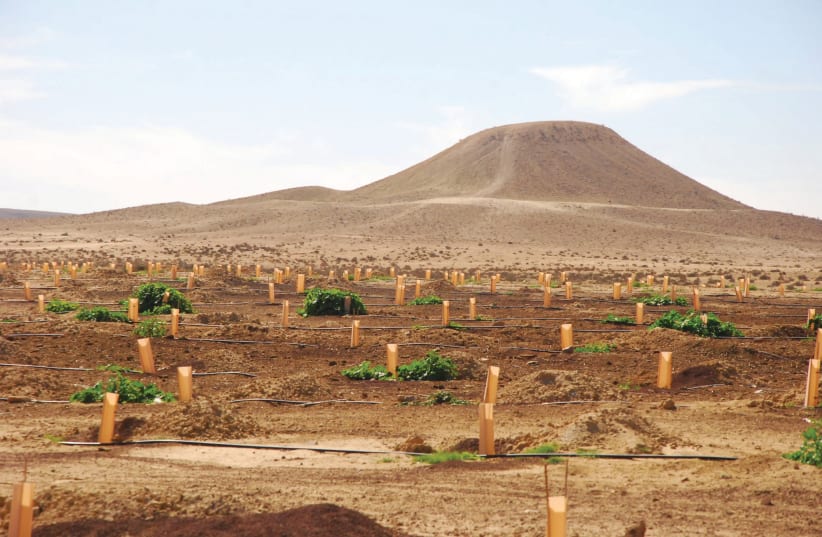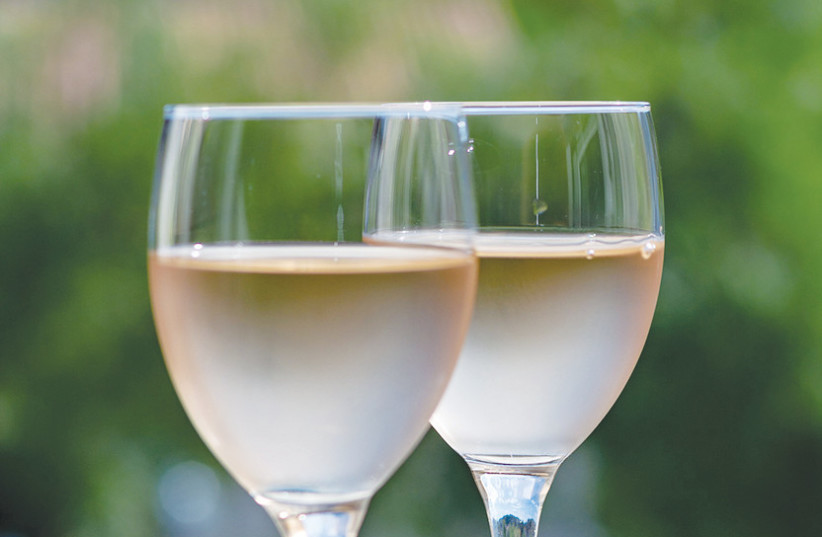David Ben-Gurion once said, “It is in the Negev that the creativity and pioneer vigor of Israel will be tested.”
The Negev, Israel’s least populated area, is known for the dry, dusty desert and even agricultural creativity, like growing cherry tomatoes in salty water – but wine? Wine should come from the Galilee or Golan Heights, or the hills around Jerusalem. Who makes wine in the desert?
The Negev desert has an average of 320 days of sunlight a year and only 80 millimeters of rainfall. There is a saying among winemakers that stress is good for the vines – here they have to work hard to get enough water. It is very hot during the day and very cold at night – that temperature difference is actually good for the wine. In addition, the dryness keeps insects away.
Today, there are at least 20 wineries in the Negev, producing some of Israel’s most interesting wines. The winemakers here believe that the desert offers a unique terroir, that combination of grapes and soil that gives wine a sense of place. One winery that opened just last year is the Pinto winery in Yeroham.
“Our family has been very involved in efforts in education to assist people living in Israel’s periphery especially in the Negev,” owner David Pinto told The Jerusalem Report in an interview. “We planted a large vineyard next to Yeroham and we are opening a state of the art visitors center.”
According to Jewish law, grapes cannot be used for the first three years so the winery has bought grapes from several nearby vineyards for its first release of Pinto wines. The labels have a fox (shu’al) in Hebrew, and the vineyard is planted on Wadi Shualim. Talented winemaker Yaakov Oryah made three wines in the series, and as a service to my readers, I tasted all three of them.
The rosé and shiraz were both very good, but the chardonnay really knocked my socks off. There was a little bit of salinity in the finish, perhaps because there is so little water in the area. I look forward to trying more Pinto wines.
Another desert winery worth trying is Nana Estate Winery in Mitzpe Ramon. Estate, by the way, means that the winery owns all of the vineyards where the grapes are grown, meaning they have more control over the wine from the beginning.
Winemaker Eran Raz, whose nickname is Nana, moved to Mitzpe Ramon in 2007 with his wife and family (today, they have six children!) and planted his first vineyards. Just 15 miles from the Egyptian border, the green vines of Nana Estate Winery are a welcome change from the dusty brown around.
Today, Nana makes a series of wines including what I believe to be one of Israel’s best chenin blanc, a varietal that is not commonly grown in Israel. The delicate wine is a pleasure to drink.
Our last desert winery is Yatir, built next to an ancient wine press that shows this area has been a wine growing region for thousands of years. According to the winery, David Ben-Gurion wanted to plant a forest in the area, but agronomists told him the soil was not good to grow trees. “So replace the experts,” Ben-Gurion said.
Today the Yatir Forest on the border of the desert is one of Israel’s largest forests, and the vineyards are planted among the forests. The winery, which is a partnership with the Carmel Winery, one of Israel’s oldest and largest wineries, makes 150,000 bottles today.
Winemaker Eran Goldwasser makes a series of blends and single varietals. For a splurge, try the flagship Yatir Forest. The most recent vintage available is 2016 and is a blend of cabernet sauvignon, petit Verdot and Malbec, aged for 15 months in French barrels, and a further two years in wine bottles. L’chaim!

